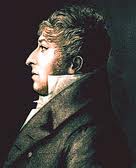Annotation:Lodoiska: Difference between revisions
No edit summary |
No edit summary |
||
| (13 intermediate revisions by 3 users not shown) | |||
| Line 1: | Line 1: | ||
--------------- | |||
---- | {{TuneAnnotation | ||
|f_tune_annotation_title= https://tunearch.org/wiki/Annotation:Lodoiska > | |||
'''LODOISKA.''' AKA - "La Lodoiska." English, Quadrille (2/4 time). B Flat Major. Standard tuning (fiddle). ABCC. The melody is one of the tunes from the set which forms "[[Quadrille des Lanciers]]," | |f_annotation='''LODOISKA.''' AKA - "La Lodoiska," "[[Lancers Quadrilles Second Figure (1)]]," "[[March in the Overture to Lodoiska]]." English, Quadrille (2/4 time). B Flat Major. Standard tuning (fiddle). ABCC. The melody is one of the tunes from the set which forms "[[Quadrille des Lanciers]]," adapted from a composition called "Sinfonia della 'Lodoïska'" by classical violinist and composer Rodolphe Kreutzer (1766-1831), written for his popular 3-act opera '''Lodoïska''' [http://imslp.org/wiki/Lodoiska_%28Kreutzer,_Rodolphe%29] (Paris, 1791). Another opera by the name '''Lodoiska''', by Cherubini, was also produced in Paris the same year and at nearly the same time, albeit at different theaters. Kreutzer's opera opened two weeks after the debut of Cherubini's, and for the next several months they were both performed, sometimes on the same evening. Opinion was (and is) split on the relative merits of the two works. | ||
[[File:Kreutzer.jpg|280px|thumb|left|Rodolphe Kreutzer]] Those were not the only two versions: Kemble also produced a "Lodoiska," staged in 1794 as did Mayr ('''La Lodoiska''', 1796). According to Garth Notley<ref>"The Lancers Quadrilles" [https://www.regencydances.org/paper007.php] </ref>, "It became a common practice in the 1820s to adapt operatic music to Quadrille dancing, this is a relatively early example." | |||
<br> | <br> | ||
<br> | <br> | ||
The lancers set was printed in early 19th century collections, including J. Hewitt's '''A Collection of New Cotillions''' (New York, c. 1803). The tune also appears in the music manuscript collections of Leeds, Yorkshire, musician George Spencer (c. 1831), Shropshire fiddler Robert Hughes (1823), and Shropshire musician and poet John Moore (c. 1837). See [[Annotation:Lancers Quadrilles First Figure (The)]] for more. | |||
|f_source_for_notated_version=a c. 1837-1840 MS by Shropshire musician John Moore [Ashman]. | |||
'' | |f_printed_sources=Ashman ('''The Ironbridge Hornpipe'''), 1991; No. 82, p. 33. | ||
|f_recorded_sources= | |||
|f_see_also_listing= | |||
}} | |||
------------- | |||
---- | |||
Latest revision as of 22:09, 2 May 2024
X:1 T:March in the Overture to Lodoiska M:C| L:1/8 R:March Q:"Moderato" B:William Cahusac – The German Flute Preceptor (c. 1814, p. 18) Z:AK/Fiddler’s Companion K:D d>dd>d d2d2|d3A B>cd>e|f>ff>f f2f2|f3c d>ef>g|a>aa>a a2d'2| a2 {g}(fe/f/) {a}(gf/g/) {f}(ed/e/)|f>ga>b a2d'2|a2 {g}(fe/f/) {a}(gf/g/) {f}(ed/e/)|f2{de}f>e d2 {fg}a>g| f2 f2 {ef}g>ef>e|e2 {de}f>e d2 {fg}a>f|f2 Tf2 {ef}g>ef>d|e>AA>A A2 Tc2{Bc}|d>AA>A _B4| A>AA>A A2Tc2{Bc}|d>AA>A _B4|A2a2z4|.d2.d2 .d>AB>c|.d2.d2 .d>AB>c| d2Te2 f>ed>f|e>dc>B A>Bc>A|.d2.d2 .d>AB>c|.d2.d2 .d>AB>c|d2e2 {de}f>ed>f| e2z2 A>Bc>d|e2.a2.a2.a2|a>gf>e d>ef>d|.A2.A2.A2 B>c|d>cd>e f>ed>f| e2.a2.a2.a2|a>gf>e .d2 {c'}d'2|.d2{c'}d'2 a>gf>e|d4 z4||
LODOISKA. AKA - "La Lodoiska," "Lancers Quadrilles Second Figure (1)," "March in the Overture to Lodoiska." English, Quadrille (2/4 time). B Flat Major. Standard tuning (fiddle). ABCC. The melody is one of the tunes from the set which forms "Quadrille des Lanciers," adapted from a composition called "Sinfonia della 'Lodoïska'" by classical violinist and composer Rodolphe Kreutzer (1766-1831), written for his popular 3-act opera Lodoïska [1] (Paris, 1791). Another opera by the name Lodoiska, by Cherubini, was also produced in Paris the same year and at nearly the same time, albeit at different theaters. Kreutzer's opera opened two weeks after the debut of Cherubini's, and for the next several months they were both performed, sometimes on the same evening. Opinion was (and is) split on the relative merits of the two works.

The lancers set was printed in early 19th century collections, including J. Hewitt's A Collection of New Cotillions (New York, c. 1803). The tune also appears in the music manuscript collections of Leeds, Yorkshire, musician George Spencer (c. 1831), Shropshire fiddler Robert Hughes (1823), and Shropshire musician and poet John Moore (c. 1837). See Annotation:Lancers Quadrilles First Figure (The) for more.

